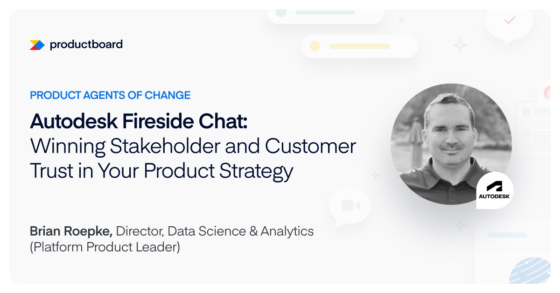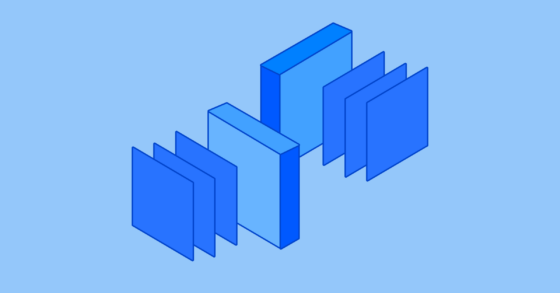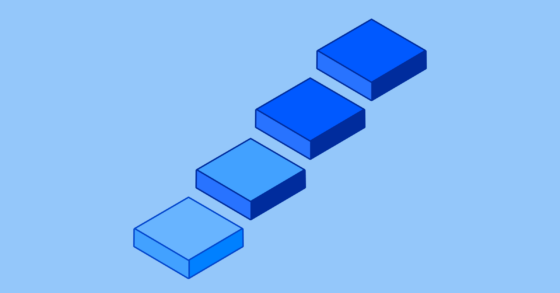The past, present, and future of FYI: How Hiten Shah turned an obsession with customers into Product Excellence

Welcome to our Age of Product Excellence series — a deep exploration of the Product Excellence Methodology, the product leaders who practice it, and the excellent products that result. Join us as we shine light on the strategies and thought processes behind an excellent product that customers use and love.
Hiten Shah knows a thing or two about starting companies. After over a decade in the tech world and five multimillion-dollar products, Hiten now devotes his attention to FYI — a document organization service that is the result of over 500 conversations with customers, extensive competitive analysis, an MVP built in five days, and numerous product iterations and growth experiments.
In this installment of our Age of Product Excellence series, we explore FYI’s evolution from the seed of an idea to its ongoing journey towards an optimal user experience. We then take a close look at how Hiten plans to leverage product-led growth to build a tool that entire teams can use and benefit from.
The story is organized into the following sections:
- Early customer research and the genesis of FYI.
- Hiten’s approach to competitive analysis.
- Learnings from an MVP built in 5 days.
- Optimizing the customer experience at every stage of the product journey.
- How product-led growth plays into the future of FYI.
Let’s dive in.
The genesis of FYI
Prior to FYI, Hiten and his co-founder Marie Prokopets built two other products in the document tools space. While there were lots of learnings from these ventures, they ultimately weren’t tools that succeeded in the long-term.
“We realized that we didn’t understand the top challenges that people had with documents yet. And we weren’t obsessed enough with our customers to fully understand their needs, motivations, and behaviors.”
With the goal of building a product that would be used and loved, they decided to ask potential customers directly about their relationship with existing document tools. Using an early-access survey, they learned that the number one challenge people have with documents is finding them across all the different apps that they use.
These valuable insights — discovered before “writing a single line of code or designing a single pixel” — became the genesis of what FYI is today.
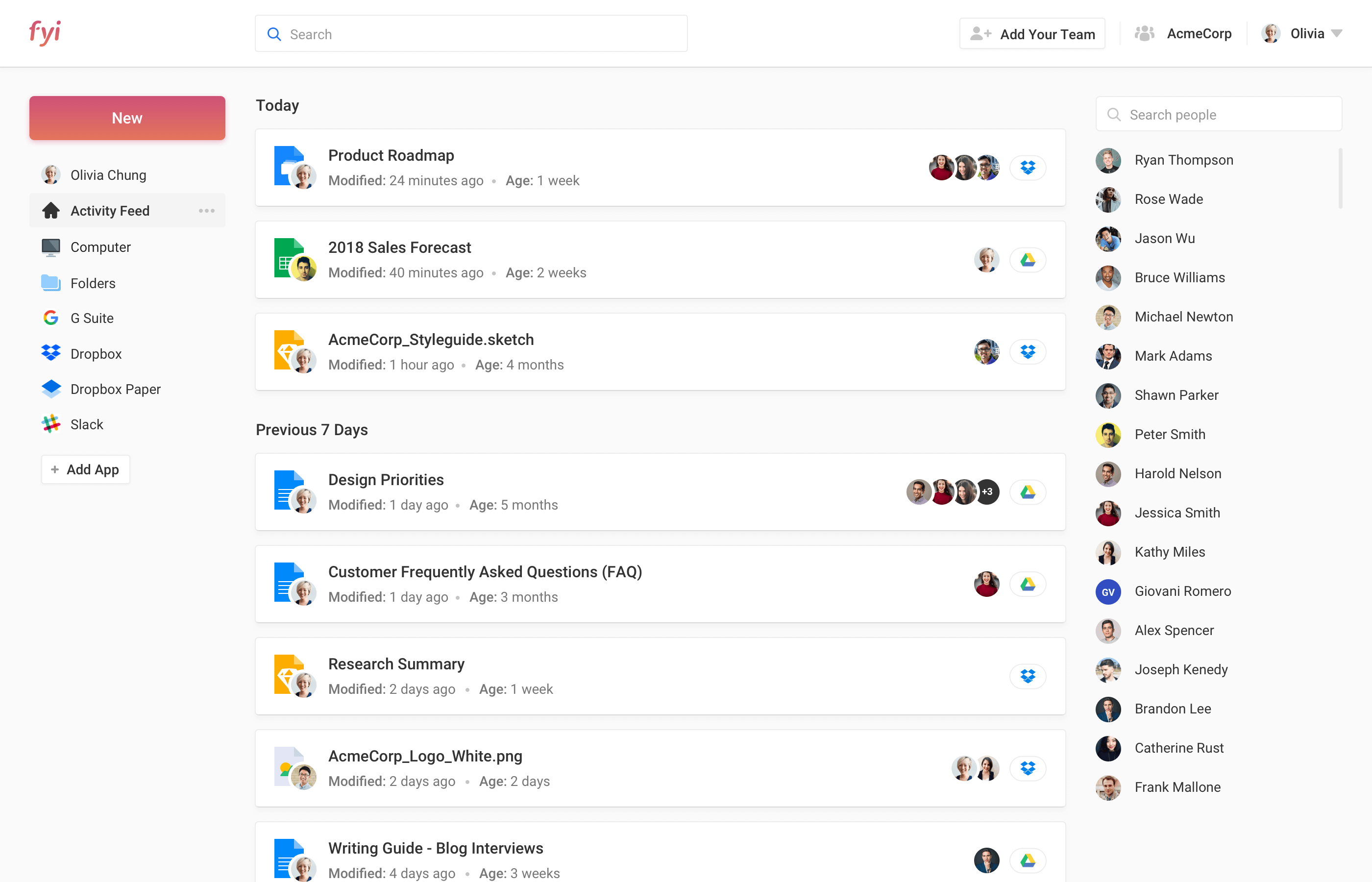
Getting to the bottom of how customers perceive competitors
The role competitors play in the document app market was used to define FYI’s product strategy, but maybe not in the way you’d think.
“We don’t conduct competitive research because we care about competitors, we do it because we care about how customers feel about competitors. For FYI, we want to learn about their workflow within these alternatives to our product.”
To see how satisfied potential customers were with existing solutions, Hiten distributed a survey to find the Net Promoter Score (NPS) of these alternatives. Turns out, satisfaction within the space was not high in general. When Hiten looked deeper into the market, he discovered that many companies that attempted to solve the problem of finding documents across apps relied solely on a search functionality, and had actually flopped in some way — they shutdown, got acquired, or were petering around in the market.
Because it is hard — if not impossible — to research products that had already failed, Hiten and his team needed to get creative on how to move forward with research. Enter FYI’s first product experiment, a Minimum Viable Product (MVP).
Building an MVP in 5 days
“We decided to build an MVP with the goal of learning as much as possible about how people interact with document tools. It was built in five days. Our engineers designed and coded it in three days and we iterated on it internally for another two days. Voilà! We had a release anyone could use that we could learn from.”
What the FYI team built connected to several different APIs. People could connect to Google Drive, Dropbox, One Drive, and Box. And then they were presented with a search box. When a keyword was typed in to find a document, all the APIs for the tools were pinged and relevant search results were displayed.
For the next month, the MVP was released to two batches of 10 people.
The findings were both surprising and illuminating. “We learned that people don’t want to find documents by searching for them. As counterintuitive as that sounds, search is not necessarily effective because people don’t remember document titles or exact words within documents. It explains why the products that came before us — which solely relied on search functionality — failed.”
From the MVP, Hiten and his team were able to create an effective interface for people searching for documents. “FYI is essentially a product that organizes your documents so you can find them without having to do any work. We provide four different ways to find documents with search as a last resort. We’ve also made FYI into a Chrome Extension so it is easily accessible.”
Learnings from the MVP saved Hiten and his team months to years of time.
Optimizing the customer experience at different stages of the product journey
“From the beginning, we’ve been obsessed with the journey our customers go through. Our laser-focus on customers, their feedback, and behavior helps us make better-informed product decisions at every touchpoint.”
Excellent products consider the needs of their customers every step of the way. To deliver this type of cohesive experience, Hiten makes sure to get as much information about customers as possible at different stages of their product journey:
- Delivering a first interaction that counts
The FYI website is often a user’s first introduction to the product. Thus, the very first message they see needs to convey a clear value proposition and move them along to the next step in their journey.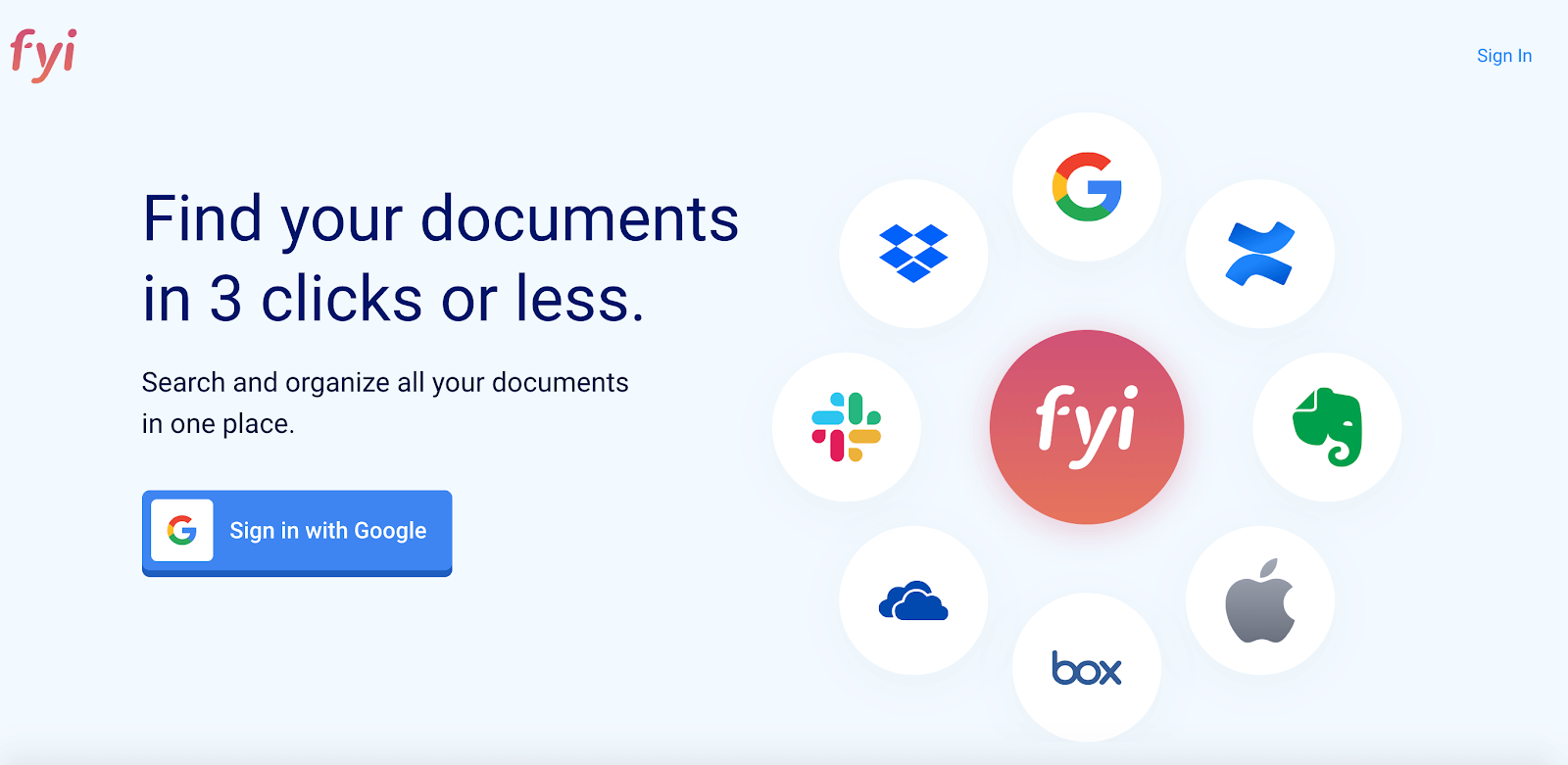
“The FYI homepage is very minimal, and we’ve tested a lot of different versions of this page and the tagline. We landed on this tagline because these are similar words to the ones that some of our most valuable customers use to describe FYI.” - Sending a welcome email to all new users
When people begin using FYI, Hiten sends a personal welcome email to find out exactly how they found out about the tool and why they signed up. “This helps us gather continuous feedback on how people find us, whether it’s via word-of-mouth or another one of our marketing efforts. And it allows us to dive deeper into individual pain points when it comes to finding documents.” - Optimizing the onboarding experience for the fastest time-to-value
It’s important to Hiten that customers understand what’s going on at each step of the onboarding process. “We’ve created an onboarding experience that helps users understand what comes next as we connect them to all the apps where their documents live. Onboarding takes 3-5 minutes at the most depending on how many integrations they connect to. After this they are dropped into FYI’s main interface. Hiten calls this quick onboarding. “What we measure is the percentage of people that sign up who get to an interface they love, and how quickly they get the information they need in front of them. That way they are set up to swiftly reach an aha moment. We’ve been doubling down and collecting data on how to make this experience fantastic for everyone.” - Testing new feature ideas before release
“If we’re going to add a new feature, we test it by adding a button for it first before we’ve built out any of the functionality. When people click the button, we ask them questions about their motivations. It’s both a quantitative and qualitative approach because we’re trying to figure out how many people are viewing the button, how many people click the button, and then what they think the button is going to do.” This exercise helps Hiten and his team validate features before effort and resources are invested into them. “We take this very active approach to feedback because we want to make sure that whatever we add to the product gets adopted by the highest percentage of customers possible.”
Leveraging product-led growth
Hiten has three big takeaways from continued conversations with customers who are both new to FYI and deep in their product experience:
- By building the single-player version of FYI, the team was able to discover that the problems people have with documents aren’t isolated to individuals. The problems expand and get increasingly painful as the number of people who are working together and trying to collaborate increases.
- People are telling coworkers about FYI even though there are currently no additional benefits available to them in the product when other people on their team start using FYI. This is an example of having a basis for product-led growth opportunities, where people try a product, see its value, and share it with others.
- In companies, documents are not only spread across apps, they also spread across people and departments. This adds up to a lot of frustration and wasted time, resulting in lost productivity in companies of all sizes.
“Product-led growth starts when people try a product, see its value, and share it with others.”
These insights open up a meaningful and logical evolution of FYI, one that Hiten and his team are focused on bringing to life — updates to the product that will evolve FYI from its current “single-player mode” to multi-player. So far, FYI has been very intentionally designed to grow through word-of-mouth by creating an experience that people want to tell others about without being prompted.
The most fundamental level of product-led growth starts with creating a product that has strong word-of-mouth. From this foundation, a product can be expanded so people share the product with others through their usage.
The most fundamental level of product-led growth starts with creating a product that has strong word-of-mouth.
Current experiments around making FYI more useful for companies of all sizes revolve around making it easier for customers to bring their co-workers into the product, and features that will make the product more valuable as more people join.
“People are already sharing FYI with their teams without any prompting from us. They are also sharing documents with people outside of their companies. These findings are a great example of the benefits of customer obsession, because by going deep into each customer and their pain points, we now have a clear understanding of exactly where to go next with our product.”
“By going deep into each customer and their pain points, we now have a clear understanding of exactly where to go next with our product.”
Turning customer obsession into Product Excellence
For Hiten, customers are the most important piece of the Product Excellence equation, and his product management philosophy centers around a deep obsession with their needs, motivations, and actions.
“Customer obsession is about unearthing the problems that customers have, understanding their current behaviors — whether it’s with your product or an alternative to it — and using that information to determine how to continuously improve the product for customers.”
The understanding that the FYI team has of customers combined with their customer obsession helps them make the type of data-informed product decisions that have brought FYI the success it experiences today. Because at the end of the day, your goal is to build products that solve critical problems for customers. Therein lies the key to building excellent products that customers love to use.
This post has been published on www.productschool.com communities.


